Making recombinant immunoglobulin G (IgG) is an essential step in making therapeutic antibodies that can be used to treat a wide range of illnesses. This procedure creates antibodies with excellent specificity and affinity using recombinant DNA technology.
Genetic engineering involves introducing expression vectors into host cells to generate recombinant antibodies. These vectors improve antibody folding and post-translational modifications. CHO and HEK293 mammalian cells make antibodies more stable, physiologically active, and immunogenic. This is because translating modifies them greatly.
Today, biologics drug development requires recombinant immunoglobulin G (IgG) antibodies. They are promising therapeutic candidates due to their specificity and versatility. Recombinant IgG expression suffers from yield, stability, and functionality issues. Recombinant IgG expression optimization in drug development can help you overcome these problems. Keep reading to learn how.
Recombinant IgG antibodies are created using recombinant DNA technology to achieve desired features. This method has many advantages over conventional antibody manufacturing. One of the best things about recombinant antibodies is that they mimic human IgG structures, reducing adverse immune system reactions.
Additionally, recombinant production guarantees consistent quality by maintaining homogeneity across batches, improving the safety and effectiveness of medicinal applications. These features show how important recombinant IgG is in making biological drugs because it provides reliable and personalized therapeutic agents.
The most common antibody class used in therapeutic development is immunoglobulin G (IgG) which is preferred due to its distinct structural and functional characteristics.
IgG is the best type of antibody for making medicines because it has a long serum half-life, strong effector activities, the ability to provide passive immunity, and has been used in the past.
Immunoglobulin G (IgG) is integral to making therapeutic antibodies because it has beneficial structural and functional properties. It has a long half-life because it is connected to the neonatal Fc receptor (FcRn), which protects it from being broken down by lysosomes. IgG is the most common antibody in human serum.
This longer half-life reduces dose frequency in therapeutic applications, improving patient compliance. IgG antibodies have potent effects that kill pathogens and sick cells. These effects include complement-dependent cytotoxicity (CDC) and antibody-dependent cellular cytotoxicity. Due to these properties and verified manufacturing methods, IgG is recommended for therapeutic antibody synthesis.
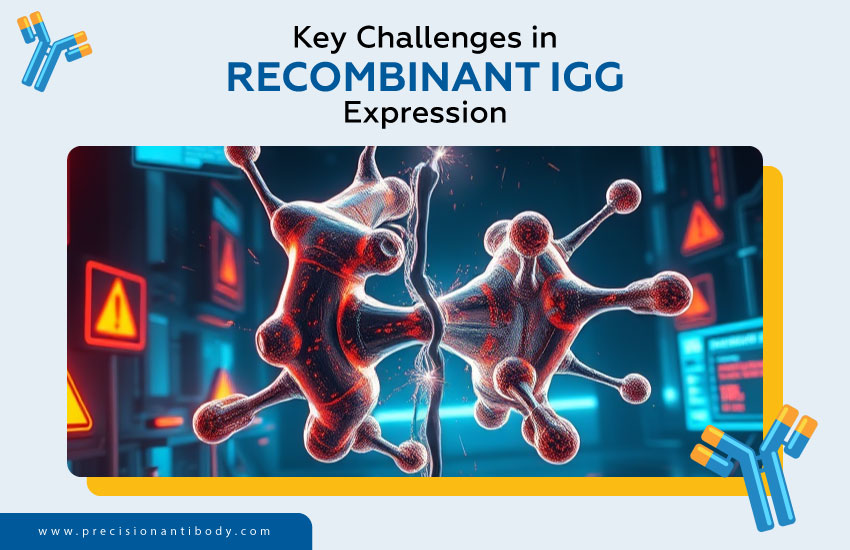
The creation of recombinant immunoglobulin G (IgG) is essential for the development of therapeutic antibodies. However, recombinant IgG expression has several difficulties that may affect functionality, yield, and purity.
Recombinant IgG formation is complicated by pairing heavy and light chains. Mispaired chain byproducts complicate downstream processing. Low levels of mispaired byproducts occur despite chain pairing methods. Contaminants that closely resemble the desired product make purification difficult.
Multiple co-expressing polypeptide chains can cause aggregates, light chain mispairing, and heavy chain homodimers. Because they resemble target IgG, these byproducts are hard to remove. They originate from uneven chain expression and improper assembly. Purification methods must be effective to remove these pollutants from the product.
Expression system selection is crucial to recombinant IgG production. Chinese hamster ovary (CHO) cells retain some intracellular IgG in the endoplasmic reticulum even when fully assembled. This retention reduces secretion and yield. Cellular bottlenecks must be identified and solved to optimize production.
IgG function depends on proper glycosylation. Achieving suitable and consistent glycosylation patterns in recombinant systems can be difficult. Changes in glycosylation can impact the antibody’s immunogenicity, stability and effectiveness. To solve these problems sophisticated methods are being investigated, such as adding particular glycosylation sites.
Bispecific antibodies require several chains, making them more complicated. Avoiding mispairing and correcting heavy-light chain pairing is a major concern. Because mismatched chains might create pollutants that are hard to extract from the desired product, purifying methods are needed to eliminate these byproducts.
Contaminants and byproducts complicate purification. Some pollutants are hard to remove and impair yield because they closely imitate target IgG. Researchers are developing novel IgG cleaning methods to improve stability and efficacy. Mixed-mode chromatography and cleaning components are one way.
To make recombinant IgG, you must get past issues with glycosylation consistency, chain pairing, byproduct production, the expression system’s limitations and purification. For therapeutic antibodies to be produced effectively and economically these problems must be resolved.
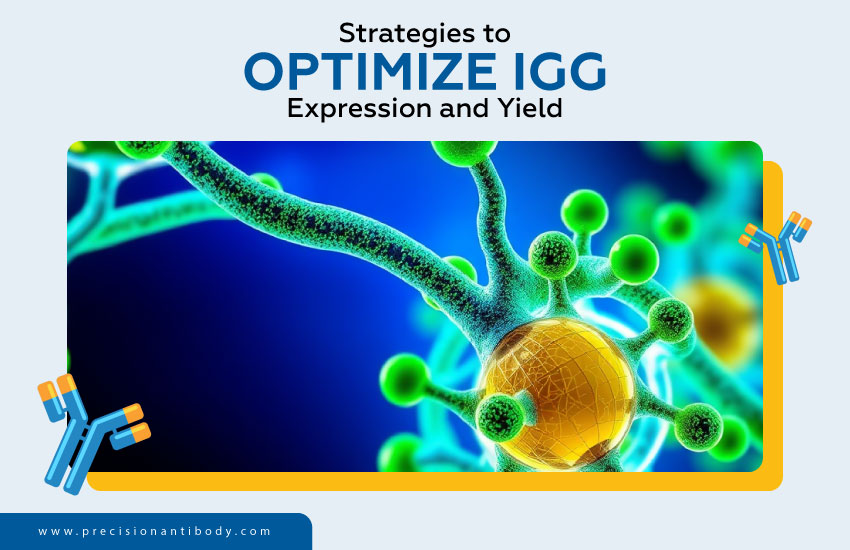
To overcome these challenges, several optimization strategies can be implemented:
The first step in improving IgG production is carefully optimizing the cell culture environment. Temperature, oxygen supply, nutrition availability and pH levels are essential variables that affect antibody output. Changing these characteristics can significantly impact cell productivity and viability.
For example, research has shown that increasing the composition of culture media can result in higher protein output and cell proliferation. Fine-tuning these settings, made easier using automated methods, has made higher IgG titers in Chinese hamster ovary (CHO) cells possible.
In addition, it has been shown that certain media additives can change the glycosylation patterns of IgG, making it more useful for therapy. These additions are valuable instruments for creating recombinant glycoproteins with the appropriate characteristics.
Codon optimization is essential for improving IgG genes’ translation efficiency. The protein’s sequence of amino acids doesn’t change during this process, but the DNA sequence changes to match the host organism’s preferred codon usage.
Thanks to recent advancements, deep learning can now enhance codon optimization. These techniques examine intricate patterns in using codons to maximize protein production. Experimental validation has shown these methods to be successful in raising protein yields.
Researchers can also employ technologies like Integrated DNA Technologies (IDT) Codon Optimization Tool to create gene sequences that function best in particular organisms. By modifying codon use, these methods improve overall protein production and translational efficiency.
Adequate host system selection is essential for the success of recombinant IgG expression. Every system has unique benefits and drawbacks.
Therefore, a multifaceted approach is needed to increase IgG production and expression. This includes carefully picking the best host system based on the needs of the antibody product using advanced codon optimization techniques, and fine-tuning the conditions of cell culture.
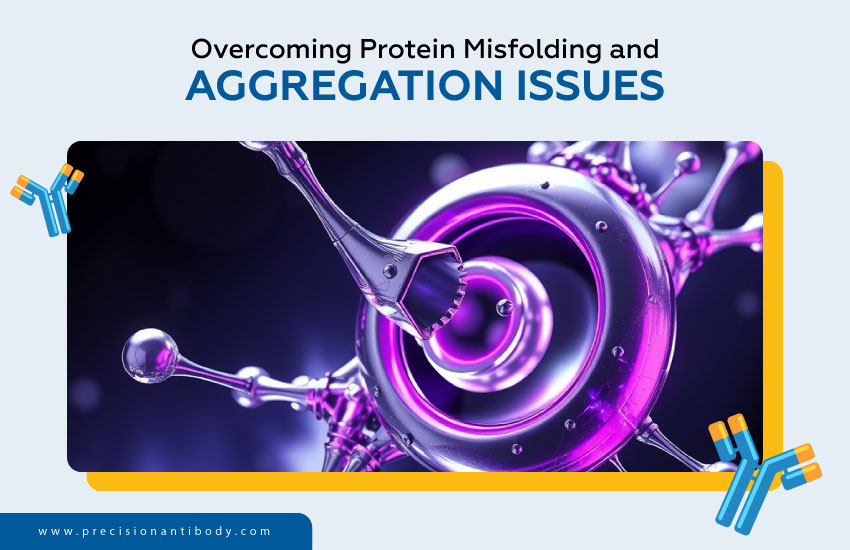
Protein misfolding and aggregation severely hampered the manufacture of therapeutic proteins and biotechnology. Recent research has concentrated on using molecular chaperones and improving buffer conditions to improve protein folding and solubility.
Molecular chaperones are vital proteins that help young polypeptides fold correctly and avoid aggregation and misfolding. GroEL-GroES and DnaK-DnaJ-GrpE are the central chaperone systems in Escherichia coli.
Putting these chaperones together with target proteins has increased the production of useful, soluble proteins. For example, a study showed that co-expression of molecular chaperones in E. coli made recombinant proteins, such as single-chain variable fragments (scFvs), much more soluble.
To enable this method, plasmid sets that express multiple chaperones have been produced. These chaperone teams improve protein folding and reduce aggregation. The Chaperone Plasmid Set contains plasmids expressing several chaperone combinations. These chaperones improve target proteins’ disintegration and make them better.
The buffer’s composition is essential for preserving proteins’ stability and solubility. Adjusting pH, ionic strength, and particular additives can improve protein function and avoid aggregation. Recent research has investigated the effect of different buffer components on protein solubility.
Research shows that buffer molecules affect phase stability and protein-protein interactions. Scientists tested the stability of lysozyme from hen egg whites with four different pH 7.0 buffers. These were moops, phosphate, HEPES, and cacodylate. Because they react with water, buffer molecules stick to protein surfaces and change the electrostatic field’s stability, affecting how well the protein dissolves.
Additionally, several excipients increase protein solubility. Using ultrahigh-throughput screening, many additives were tested for protein solubility. Sucrose, arginine, and polysorbate 80 considerably enhanced solubility.
Polysorbate 80 increased solubility by 1.4% per mM, as did arginine and sucrose.
Combating protein aggregation and misfolding necessitates a diversified strategy. Co-expressing molecular chaperones can help proteins fold correctly. Carefully changing buffer parameters like pH and additive choice can improve protein stability and solubility.
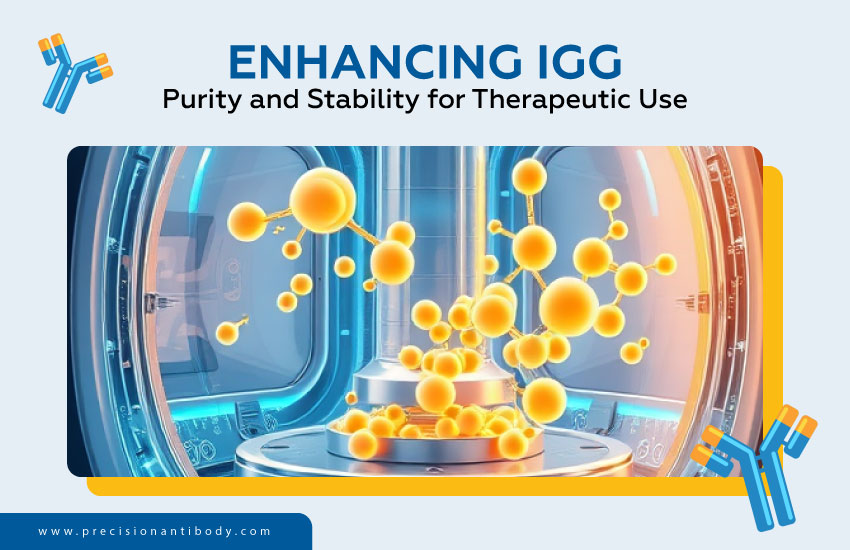
Improving the purity and stability of immunoglobulin G (IgG) is critical to its therapeutic efficacy. This includes implementing strong formulation strategies, using modern purification processes, and addressing stability issues during production.
Chronic therapy requires stable IgG compositions. IgG stability depends on pH, ionic strength, and excipients. Research shows that the IgG subclass affects developability and molecular features. Because of its hinge fragility, IgG1 breaks down differently. Understanding subclass-specific features simplifies formulation design to reduce breakdown and increase stability.
IgG preparations must be highly pure for therapeutic purposes. Various chromatographic techniques separate IgG from complicated mixtures.
Because each chromatographic method targets a different physicochemical feature of impurities, using them together in a particular order can lead to higher purity levels.
Because of several degradation mechanisms, maintaining IgG stability during manufacturing is challenging. Variations in temperature, pH, and shear stress are a few factors that might cause structural alterations that lower efficacy.
We can determine IgG’s stability and efficacy by analyzing its physicochemical properties. Studies have demonstrated that serum-extracted therapeutic molecules may lose efficacy due to physicochemical changes. Production factors must be monitored and controlled in real time to prevent IgG treatment degradation and maintain quality.
In summary, enhancing the stability and purity of IgG for medical use necessitates a meticulous strategy that incorporates specific formulation techniques, employs state-of-the-art purification methods and closely monitors the production process to prevent any degradation.
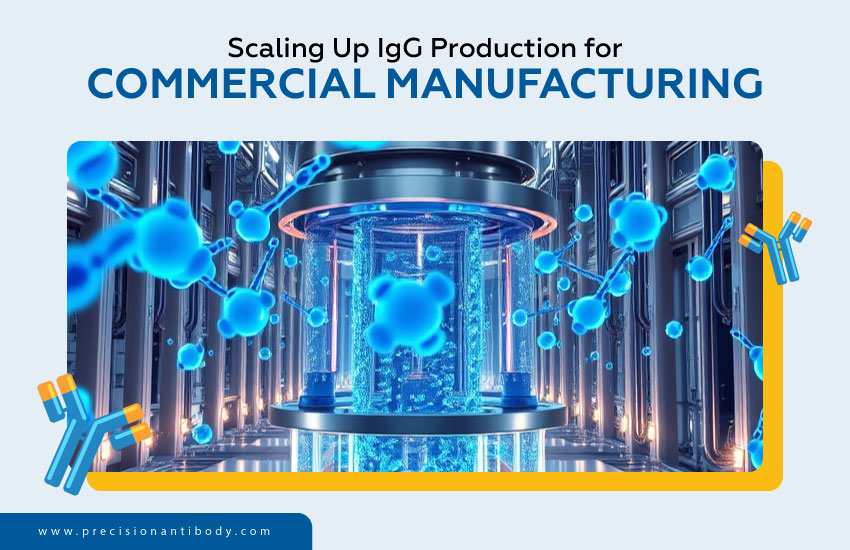
Improving bioreactor conditions and using new developments in synthetic biology to boost expression are needed to make more immunoglobulin G (IgG) for commercial use.
Breakthroughs in synthetic biology and efficient bioreactor systems are essential to scaling up IgG synthesis for commercial use. Combining these tactics improves yield, efficiency, and product quality, satisfying the rising demand for therapeutic antibodies.
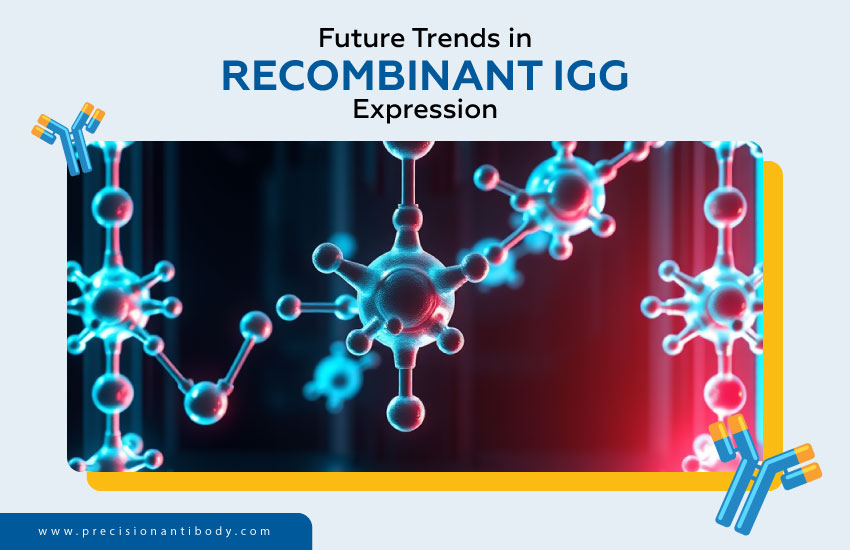
The field of recombinant Immunoglobulin G (IgG) expression is rapidly evolving with several emerging trends poised to enhance production efficiency, specificity, and applicability.
Humanized antibodies have reduced immunogenicity in therapeutic applications. Computational modeling and recombinant DNA have simplified grafting murine antibody complementarity-determining regions (CDRs) onto human frames. This precision engineering improves recombinant IgGs’ immune system compatibility and therapeutic potential.
Future treatments may benefit from antibody engineering and gene therapy. Researchers can improve treatments by developing recombinant antibodies with better antigen-binding affinity and molecular architecture. These changed antibodies can be joined with effector molecules to improve targeting and therapeutic effectiveness, opening up new ways to treat diseases.
Single-domain antibodies, especially VHHs from camelids, are interesting because they are very small, stable, and easy to make in bacterial systems. Their unique features improve tissue penetration and enable innovative therapeutic uses, notably targeting inaccessible antigens. Their simple structure makes genetic manipulation easy, enabling rapid development and production.
Technological advances in expression systems, antibody creation, and manufacturing are shaping recombinant IgG expression. These advances improve antibody-based medicines’ efficacy, affordability, and accessibility to fulfill healthcare demands.
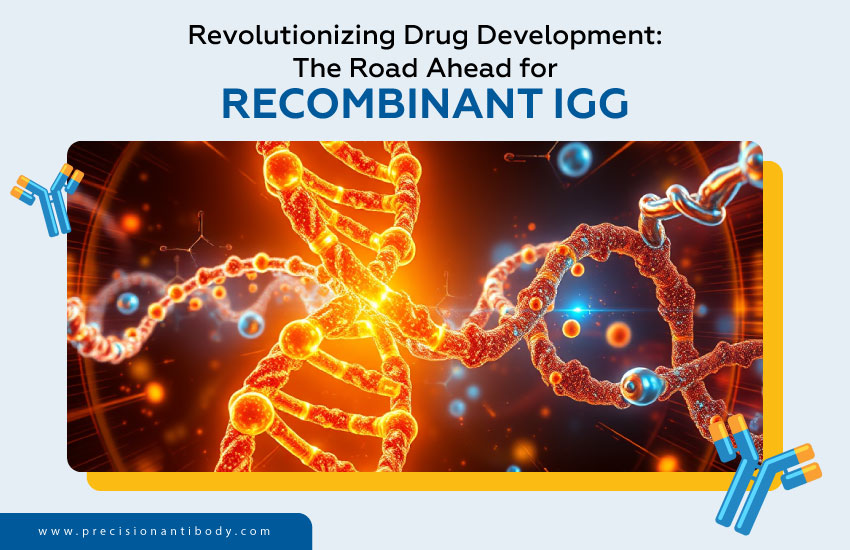
Advancing recombinant IgG expression and production will change biopharmaceuticals. Each new discovery in bioreactor optimization or synthetic biology raises therapeutic antibodies’ yield, efficiency, and availability. Large-scale IgG production is becoming cheaper and easier with the help of high-density cell culture, dynamic bioreactor optimization, and polymer-based cryogels.
Changes to E. coli, codon optimization, and genetic selection are all used in synthetic biology to increase IgG expression. These methods increase antibody production and ensure protein folding and post-translational changes, which are essential for therapeutic efficacy. Alternative expression methods, humanized antibodies, and gene therapy integration will expand antibody-based therapeutics.
Future biomanufacturing platforms, gene editing technologies, and process improvements will boost recombinant IgG. As cost-effective technologies and next-generation bioreactors spread, monoclonal antibody treatments become more affordable. IgG production and drug development are improving with synthetic biology and bioprocess engineering, making biologic treatments more accurate, scalable, and effective.
Your thoughts on recombinant IgG production’s future? Will these advances make antibody-based medicines more accessible? Comment your thoughts below! If you enjoyed this article, visit our site for more biopharmaceutical innovation debates.
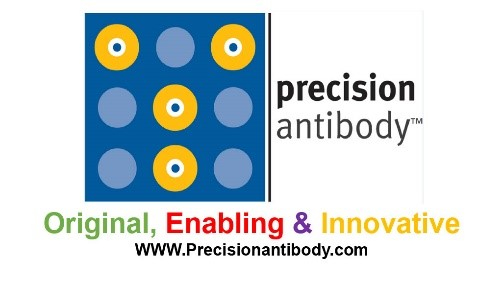
Led by innovative minds in immunology and the antibody development field, Precision Antibody has been an industry leader for over 20 years. We not only implement a cutting-edge technique in antigen design, antibody development, production, and other analyses, but we are also constantly working on ways to improve and advance technology to match the ever-changing world of science. If you are interested in learning more about Precision Antibody’s Custom Antibody development.
Precision Antibody™ is the forefront of the global Custom Antibody industry & it is led by the innovative minds in immunology and antibody development field.